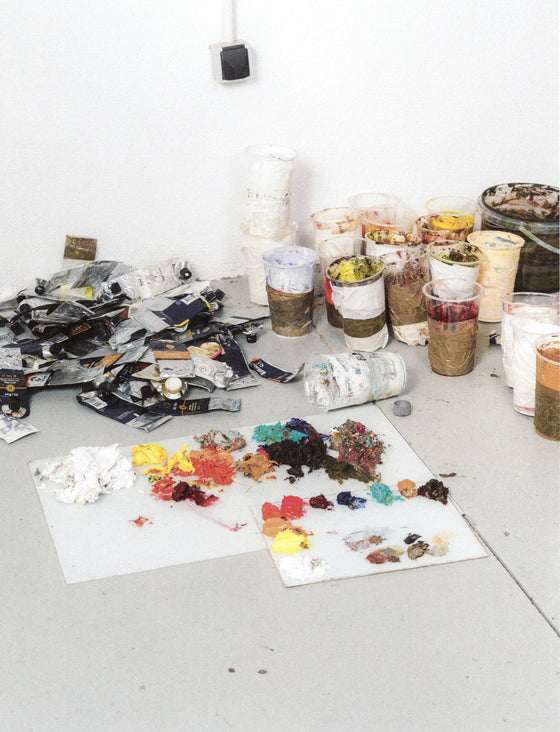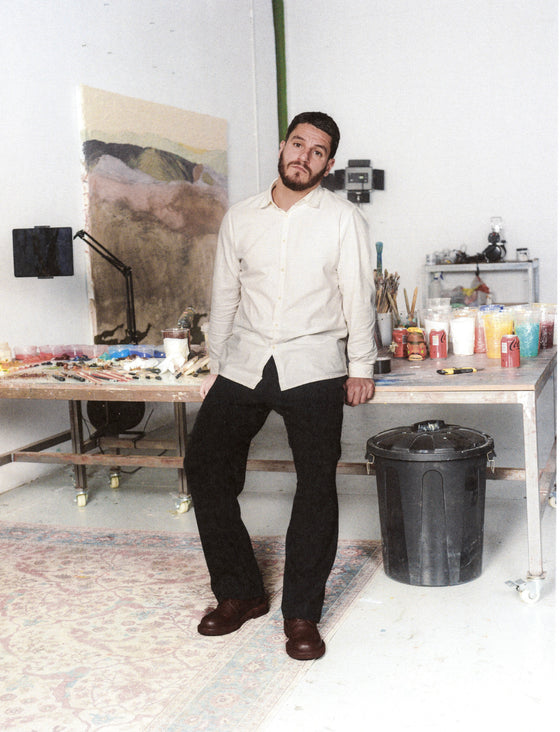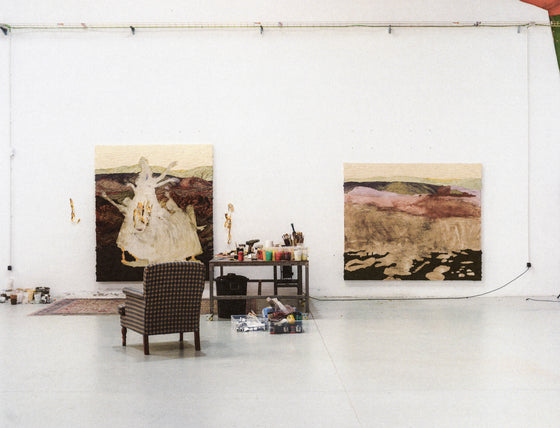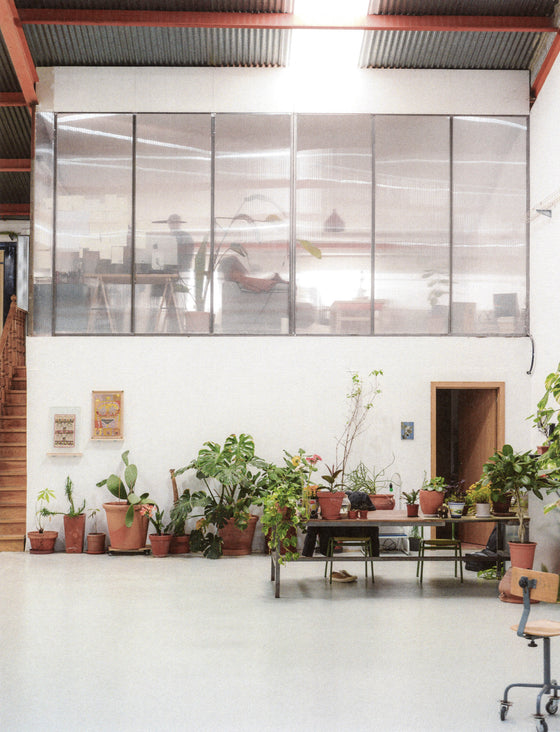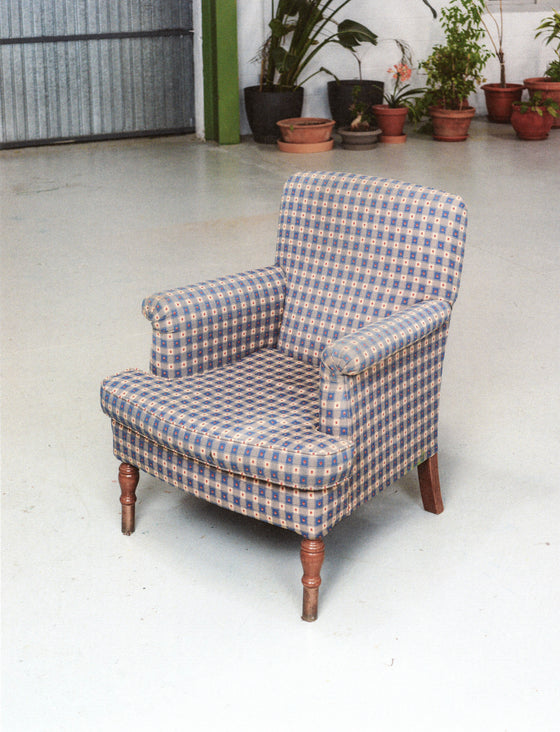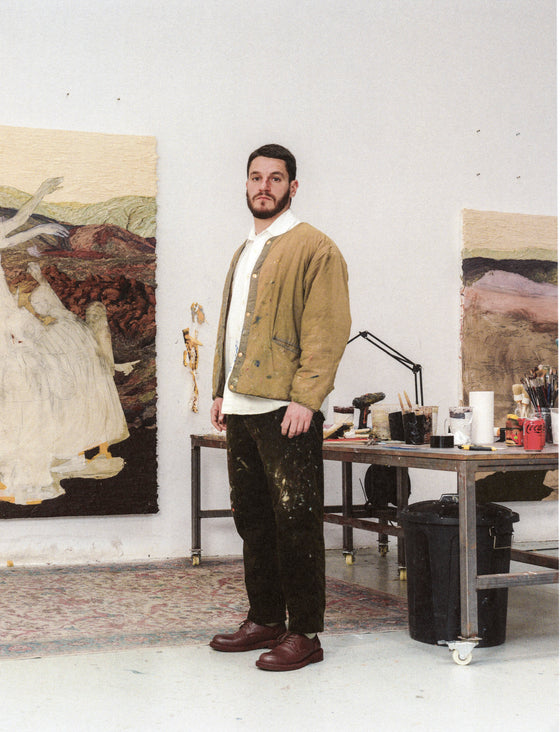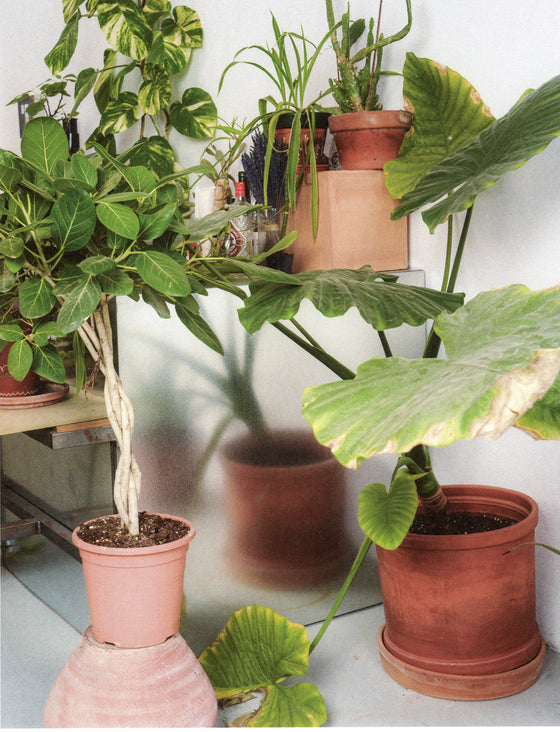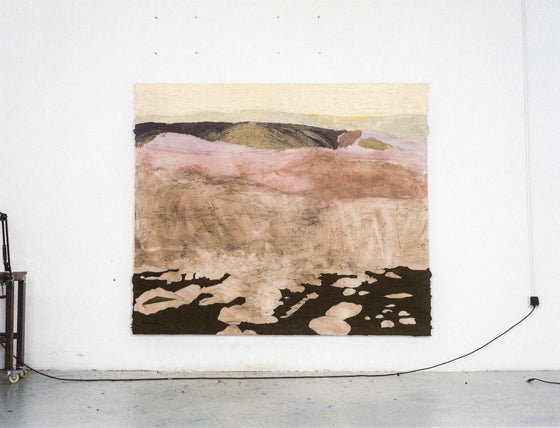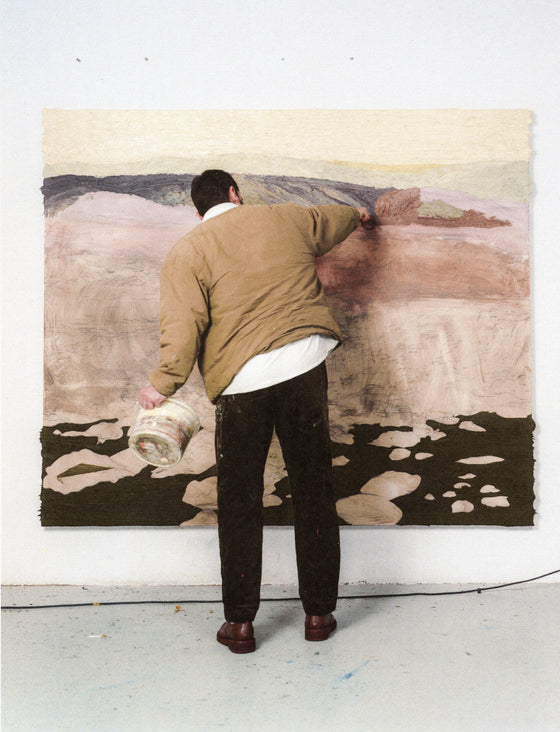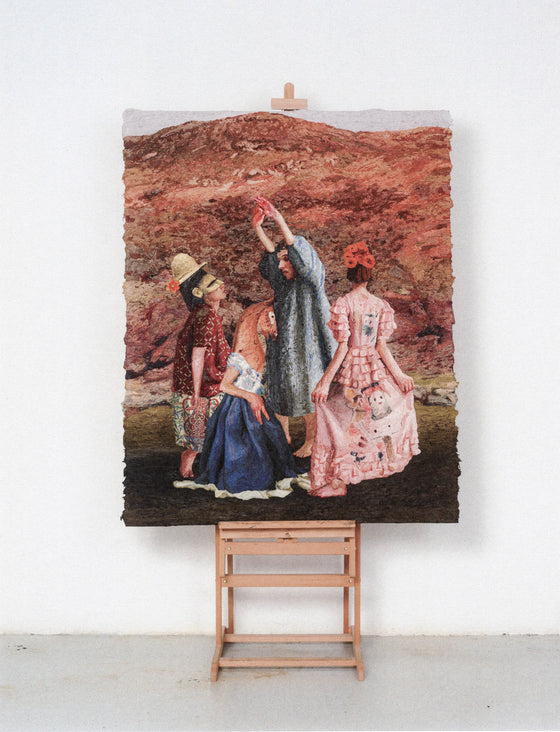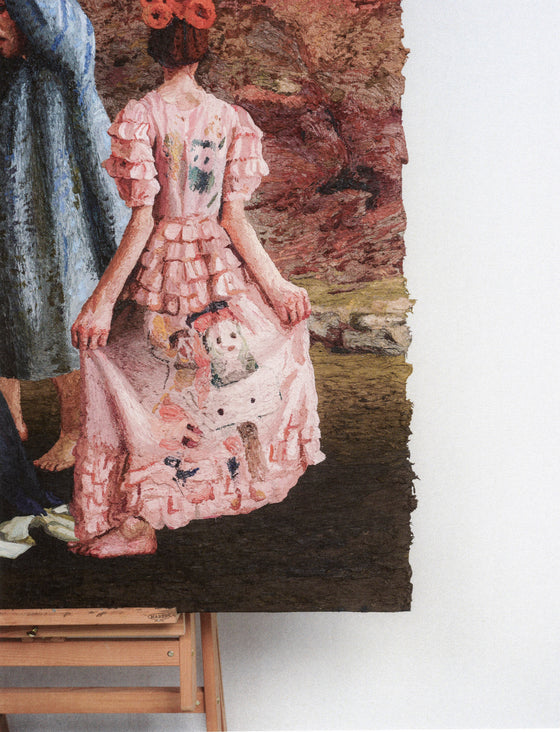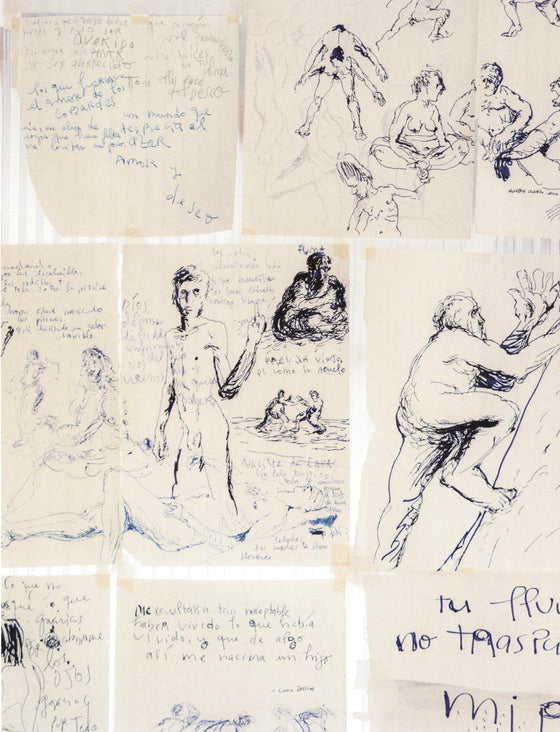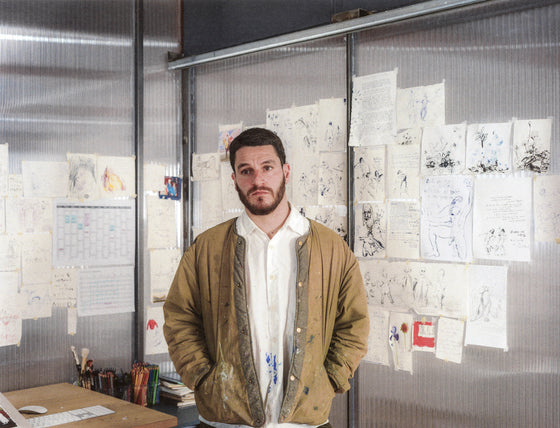The Quiet Ones
Javier Ruiz
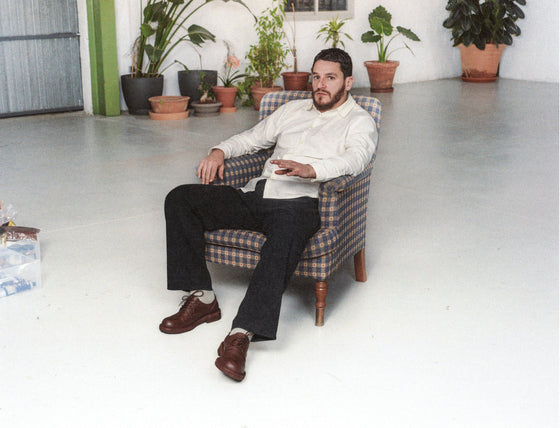
We recently had the pleasure of visiting the studio of our friend and artist, Javier Ruiz, to explore the inspiration and creative process behind his work. As an independent brand, we believe in supporting and celebrating fellow independent artists who share our passion for creativity and self-expression.
"Javier Ruiz (Jaén, 1989) began studying Graphic Design in Jaén in 2007. In 2013, he pursued Advanced Studies in Illustration in Madrid, and in 2014, he studied painting and color theory in Los Angeles (USA). In 2020, he moved to Amsterdam—an experience that profoundly transformed his life and now defines the expressive power of his painting.
Javier's work is a lyrical poem in its aesthetic plenitude. Each composition is shaped by gesture and a desire to explore human nature through the purest emotional plasticity.
With the appearance of dead nature yet brimming with life, his pieces reveal human passions, emotions, and vital reflections, contorted amid harmonious landscapes.
Javier Ruiz's studies, learning, and years of searching are now behind him, as he emerges as a young painter who draws from contemporaneity to generate vital reflection. His work is characterized by its figurative scenography and expressive power, revealing human behavior and the internal drives that shape our existence.
His romantic and decadent atmospheres allow us to approach the most lascivious human instincts—works of addictive character, softened and moderated by the ever-present role of nature as regent in each of his compositions."
Victoria Rivers
05/08/2025
We had the privilege of interviewing Javier, whose work blurs the line between the ordinary and the fantastic. In this conversation, he shares his thoughts on texture, narrative, and the strange power of the everyday.
How do you see the relationship between the ordinary and the fantastic in your work? Is it something you intentionally seek out?
The ordinary and the fantastic are not on opposite ends. They seep into each other like dampness in a wall. So I don’t seek it out it simply appears, and I expose it. Sometimes an unremarkable object, a trivial scene, has something… off, as if it’s possessed by a logic that doesn’t quite fit. That’s what interests me: when reality slightly fails. When something everyday becomes a symptom. And in that symptom, the fantastic emerges.
At Paracia we believe in the idea of “enchanting the mundane.” What does that idea mean to you? Do you identify with it in any way?
Yes, absolutely. Although I also find it interesting to disenchant what’s already enchanted. Nowadays the world is too made-up: too much narrative, props, emotional varnishes… there's so much appearance that for me the most radical gesture is to scrape. Scrape until you see the bone behind the skin and muscle or the crack in the wall that’s been painted over many times. So if “enchant the mundane” means restoring that depth and power to things we thought we already knew, then I’m fully aligned with Paracia. Especially when that “enchantment” shakes you a bit, rather than just prettifying your day.
Why did you choose to work with so many layers and textures? What importance does surface hold in a work for you?
The surface is often deceptive. It’s the first thing we see, but that doesn’t mean we truly understand it. My painting is a good example of this because even though it might seem otherwise there aren’t many layers, just a lot of texture, but no more than two or three passes. Something similar happens with textures: they strongly catch the viewer’s attention, but they’re not there to beautify, they're there to involve the viewer’s body. To make you look with your eyes and your skin. For me, if my work is honest, I should resist a bit. You can’t just look at it or read it, you have to touch it. It’s a very important part of my work because it helps me give body to ideas and make them more forceful.
Are you interested in telling stories through your paintings? What role does narrative play in your process?
I’m interested in suggesting them, not telling them from beginning to end. Narrative is present, but it appears more like an echo, a leftover. The scenes seem to come from something or to announce something but it remains suspended, unresolved.
It’s a bit like finding a shoe in the middle of a forest. You don’t know if there’s been a murder or someone had the night of their life. Clearly, something happened but you won’t be told what. So all you can do is imagine.
